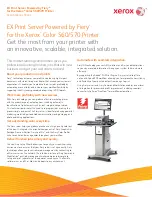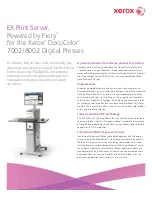
Chapter 5. Central processor complex channel subsystem
191
Subchannel number
The subchannel number is a four-digit heximal number, ranging from 0x0000 to 0xFFFF,
assigned to a subchannel within a subchannel set of a channel subsystem. Subchannels in
each subchannel set are always assigned subchannel numbers within a single range of
contiguous numbers. The lowest-numbered subchannel is subchannel 0, and the
highest-numbered subchannel has a subchannel number equal to one less than the
maximum numbers of subchannels supported by the subchannel set. Thus, a subchannel
number is always unique within a subchannel set of a channel subsystem, and depends on
the sequence of assignment.
With the subchannel numbers, a program running on an LPAR, such as an operating system,
can specify all I/O functions relative to a specific I/O device, by designating a subchannel
assigned to the I/O devices.
Normally, subchannel numbers are only used in communication between the programs and
the channel subsystem.
Subchannel set identifier
While introducing the MSS, the channel subsystem is extended to assign a value range from
0 to 2 for each subchannel set. This value is called the SSID. A subchannel is identified by its
SSID and subchannel number.
Device number
A device number is an arbitrary number, ranging from 0x0000 to 0xFFFF, that is defined by a
system programmer in an I/O configuration for naming an I/O device. The device number
must be unique within a subchannel set of a channel subsystem. It is assigned to the
corresponding subchannel by channel subsystem while an I/O configuration is activated.
Thus a subchannel in a subchannel set of a channel subsystem has a device number
together with a subchannel number for designating an I/O operation.
The device number provide a means to identify a device, independent of any limitations
imposed by the system model, the configuration, or channel-path protocols.
A device number also can be used to designate an I/O function to a specific I/O device.
Because it is an arbitrary number, it is easy to fit it in any configuration management and
operating management scenarios. For example, a system administrator can have all the z/OS
systems in an environment use a device number 1000 for their system RES volumes.
With the multiple subchannel sets, for a specific I/O device, a subchannel is assigned by the
channel subsystem with an automatically assigned subchannel number, and a device number
defined by user. That an I/O device can always be identified by an SSID in conjunction with a
subchannel number, or a device number. For example, a device with device number AB00 of
subchannel set 1, can be designated as 1AB00.
Normally, the subchannel number is used by the programs to communicate with the channel
subsystem and I/O device, while the device number is used by system programmers,
operators, and administrators.
Note: Do not confuse the multiple subchannel sets function with multiple channel
subsystems.
Summary of Contents for z13s
Page 2: ......
Page 3: ...International Technical Support Organization IBM z13s Technical Guide June 2016 SG24 8294 00 ...
Page 24: ...THIS PAGE INTENTIONALLY LEFT BLANK ...
Page 164: ...136 IBM z13s Technical Guide ...
Page 226: ...198 IBM z13s Technical Guide ...
Page 256: ...228 IBM z13s Technical Guide ...
Page 414: ...386 IBM z13s Technical Guide ...
Page 464: ...436 IBM z13s Technical Guide ...
Page 476: ...448 IBM z13s Technical Guide ...
Page 498: ...470 IBM z13s Technical Guide ...
Page 502: ...474 IBM z13s Technical Guide ...
Page 568: ...540 IBM z13s Technical Guide ...
Page 578: ...550 IBM z13s Technical Guide ...
Page 584: ...556 IBM z13s Technical Guide ...
Page 585: ...ISBN 0738441678 SG24 8294 00 1 0 spine 0 875 1 498 460 788 pages IBM z13s Technical Guide ...
Page 586: ......
Page 587: ......
Page 588: ...ibm com redbooks Printed in U S A Back cover ISBN 0738441678 SG24 8294 00 ...















































